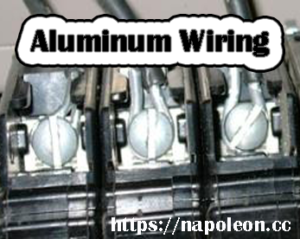Electrical Defects in your Home
Electrical deficiencies are one of the most common items identified during a home inspection. Some of the items we are going to cover are: double taps, reversed polarity, aluminum wiring, knob and tube, openings in panel board and electrical panels in bathrooms. If you purchase a home that has faulty or improperly installed electrical wiring it then becomes your problem. After spending over 20 years of inspecting residential homes I am still amazed at the amount of Do It Yourself Wiring I find in homes. When investing in a property Identify these problems prior to purchasing is really importan.
Electrical Defects – Common Issues
Double Tap Connections: This refers to the practice of adding another circuit to a breaker or fuse connection in the main panel. Typically one one wire connection per fuse or breaker is permitted. There are some panels, such
Reversed Polarity: This occurs when the hot and neutral connections are reversed. This is a safety hazard due to shock potential. For example when screwing in a light bulb, the threaded socket is now live and will give you a shock if touched. Black wire, which is hot wire, should be attached to dark screw on duplex receptacle and the white wire, which is neutral, should be attached to light coloured screw.
Aluminum Wiring: Aluminum wiring was used in residential construction from the late 1960’s to the late 70’s due to high copper prices. There are many articles written about aluminum wiring which detail its inherent weaknesses and possible over heating possibilities.
Electrical Defects – Aluminum Wiring
According to the Consumer Product Safety Commission (CPSC), “Homes wired with aluminum wire manufactured before 1972 [‘old technology’ aluminum wire] are 55 times more likely to have one or more connections reach “Fire Hazard Conditions” than is a home wired with copper.”
Aluminum wiring is required to be larger in size than copper due to electrical resistance. Aluminum is less ductile which makes it more susceptible to breaking, it is also subject to galvanic corrosion when in contact with other metals. Many insurance companies will not insure homes that have aluminum wiring installed or will require a Certificate from ESA or Master Electrician prior to insuring. Read more about aluminum wiring.
Knob & Tube Wiring: Installed in residential homes up to the 1930’s, K & T is single insulated copper wires installed using porcelain insulating tubes and porcelain knob insulators. Most insurance companies will not insure a home with knob and tube wiring installed. Due to the age of wire the insulation is almost always deteriorated and rodent damage to insulation in attics. Read more about Knob and Tube wiring.
Openings in Panel Boards: Openings in panel boards and electrical boxes are not permitted as they could allow hot sparks to exit and kids could stick their fingers or metal object into opening. Fill any openings with either knock out plugs or blanks.
Electrical Panels in Bathrooms: Electrical panel boards are not permitted to be installed in bathrooms in Ontario. Older homes maybe grandfather protected but you would have to contact ESA for a date that the code came into effect and also know the age of bathroom installation. Read more information on electrical panels in bathrooms.
Inspection Areas
Alliston
Angus
Barrie
Innisfil
Orillia
Midland
Penetanguishene
Newmarket
Wasaga Beach
Certifications









